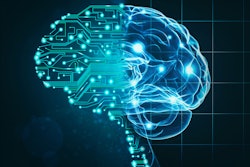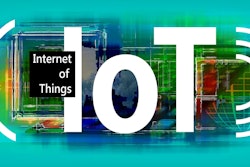
The complexities of demand forecasting have bedeviled businesses for decades. Consider these lessons from 1970s and ’80s, at the dawn of enterprise computing, as outlined in the Harvard Business Review:
U.S. electric utilities lost millions in the 1970s and ’80s after investing in new power plants based on forecasts that demand would rise 7 percent a year.
In 1980-81, the petroleum industry invested $500 billion in infrastructure and services, only to suffer massive losses when projections for higher oil demand didn’t materialize, triggering an industry-wide price collapse.
In the early 1980s, personal computer makers built millions of PCs on forecasts of explosive growth. When demand fell far below projections, many manufacturers abandoned the market or went bankrupt.
Decades later, businesses have at their disposal vast volumes of data scarcely imaginable in the early ‘80s. Theoretically, demand forecasting should be easier and more accurate. While gains have been made, demand forecasting remains a high-stakes guessing game based on outdated historical information and software applications that rely on simplistic business rules.
The problem is that businesses aren’t equipped to leverage the volume and diversity of today’s big data. They can’t account for real-time changes that can make the difference between profit and loss. Though financial and demand planners collaborate closely, manual work and spreadsheets complicate the problem.
The result is forecasts that don’t adapt to changing variables and the risk of a multimillion-dollar impact from one small oversight or miscalculation.
How AI Improves Demand Forecasts
Artificial intelligence and machine learning are poised to revolutionize demand forecasting. AI gives demand and financial planners breakthrough capabilities to extract knowledge from massive datasets assembled from any number of internal and external sources. The application of machine learning algorithms unearths insights and identifies trends missed by traditional human-configured forecasts.
Using big data and massive compute power in the cloud, AI can simultaneously test and refine hundreds of advanced models, far beyond what is possible with traditional demand forecasting. The optimal model can then be applied at a highly granular SKU-location level to generate a forecast that typically improves accuracy significantly.
User organizations have flexibility in how AI is applied in demand forecasting, from insights, recommendations and predictions to autonomous actions based on cognitive automation. The biggest impacts of AI in demand forecasting in data impact, real-time processing and decision-making include:
Leverage more data: AI for demand forecasting helps planners optimize decisions by aggregating massive datasets from internal ERP, CRM, IoT and other systems, as well as external information such as partners, market intelligence, social media or weather forecasts. With more data, AI uses sophisticated algorithms supported by massive compute power to recommend optimal forecasts.
Real-time adaptation to change: Rather than relying on historical data, AI adapts in real time to account for changes that can range from a supply chain disruption to competition, new channels or products, or natural disasters. Incorporating this information, AI constantly learns and can course-correct to minimize risk and capitalize on opportunity.
Strategic decision-making: AI can tell users which materials, plants and SKUs to focus on and recommends actions to close gaps between unit-level and financial forecasts. Planners are able to spend less time on manual work and focus on value-added strategic decisions.
Incorporating AI into demand forecasting delivers the benefits that planners have chased for decades, with mixed results. With AI, businesses can fine-tune production and optimize inventory to reduce working capital and improve customer service levels. They can craft data-driven sales plans by reps, regions and products.
And companies can accurately predict demand for new products and the associated sales uplift based on sales history, similar products and market intelligence. AI offers what-if scenario analysis to help users understand and predict that tradeoffs between inventory and service when deciding inventory policies.
Demand forecasting has traditionally been heavy on art, lighter on science. AI elevates the (data) science aspect of the equation to pave the way for a more efficient and profitable business. It’s time to go beyond traditional forecasting and leverage transformative AI technology to solve real business problems.


















![Pros To Know 2026 [color]](https://img.sdcexec.com/mindful/acbm/workspaces/default/uploads/2025/08/prostoknow-2026-color.mduFvhpgMk.png?ar=16%3A9&auto=format%2Ccompress&bg=fff&fill-color=fff&fit=fill&h=135&q=70&w=240)

